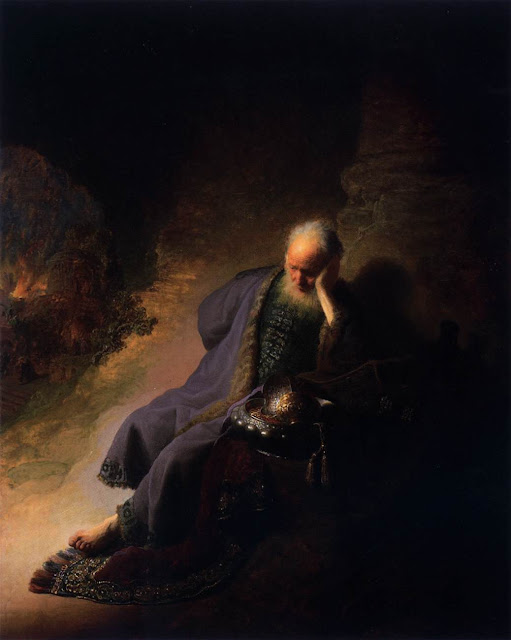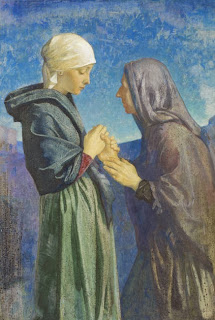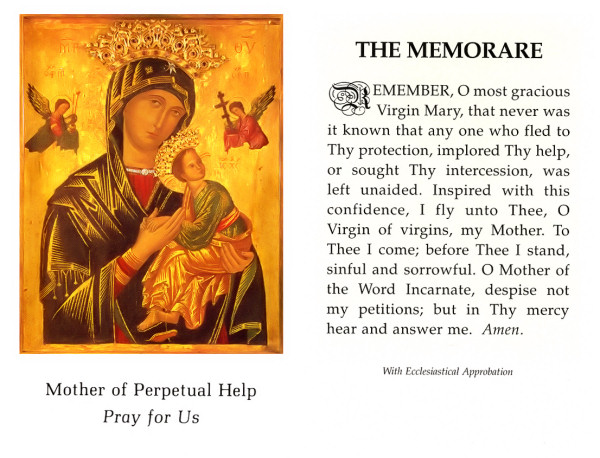'I can still see her eyes which reached to eternity.' Sunday Reflections, 12th Sunday in Ordinary Time, Year A
Jeremiah Lamenting the Destruction of Jerusalem
Rembrandt [Web Gallery of Art]
First Reading, Jeremiah 20: 10-13
Readings (New American Bible: Philippines, USA)
Readings (Jerusalem Bible: Australia, England & Wales, India [optional], Ireland, New Zealand, Pakistan, Scotland, South Africa)
Gospel Matthew 10:26-33 (New Revised Standard Version, Anglicised Catholic Edition)
Jesus said to the Twelve:
‘So have no fear of them; for nothing is covered up that will not be uncovered, and nothing secret that will not become known. What I say to you in the dark, tell in the light; and what you hear whispered, proclaim from the housetops. Do not fear those who kill the body but cannot kill the soul; rather fear him who can destroy both soul and body in hell. Are not two sparrows sold for a penny? Yet not one of them will fall to the ground unperceived by your Father. And even the hairs of your head are all counted. So do not be afraid; you are of more value than many sparrows.
‘Everyone therefore who acknowledges me before others, I also will acknowledge before my Father in heaven; but whoever denies me before others, I also will deny before my Father in heaven.’
I think it was during the summer of 1968, a few months after my ordination, that my parents and I visited the motherhouse of the Columban Sisters in Magheramore, County Wicklow, on the east coast of Ireland. We were deeply struck by the extraordinary gentle warmth of Sister Joan Sawyer from Country Antrim, Northern Ireland, who showed us around.
In December 1983 when I was giving a retreat to Columban Sisters in their convent in San Juan, Metro Manila, we got the shocking news of her violent death in Lima, Peru.
The following, in italics, is from an article on the website of the Columban Sisters, 'I was in Prison and You Vistited Me.'
Joan Sawyer was a Columban Sister who was shot dead in Lima, Peru, in December 1983. She used to go to the Lurigancho Prison in Lima three or four days a week to visit the prisoners there. The prison held over 5,000 men. Conditions were bad. Out of 5,000 prisoners only 1,000 were sentenced. The rest were pending sentence or perhaps innocent. Joan used try to bring them some relief - medicines for some, a kind word for others, news about how she was progressing with their legal papers in the ministry for Justice, etc.
The large majority of prisoners came, in her own words, 'from the poor sectors of Lima where they never had enough to eat, didn't finish school and couldn't find decent work'. On the morning of 14 December 1983 a group of prisoners decided that at all costs they were going to escape. They took as hostages Joan Sawyer, three Marist Sisters and social workers. After all-day negotiations with the prison authorities it was agreed that the prisoners and their hostages would be allowed leave the prison in the evening in an ambulance, the most inconspicuous mode of travel for getting out unnoticed.
They were no sooner outside the prison gate than waiting police riddled the ambulance with bullets from all sides. Four bullets struck Joan, one through the back of the neck, two through her leg and one through her finger. When removed from the ambulance she was dead. Joan Sawyer was born in Donegore, County Antrim, in 1932. She entered the Columban Sisters in 1949 having previously worked as a secretary in Belfast. Subsequently she took her BA degree in Mundelein College, Chicago. She went to Peru in 1977 and was 51 years old at the time of her death.
Hilary Cross, Sr Joan's niece, visited Lima for the 30th anniversary of the death of her Aunty Joan. In an article in the English newspaper The Guardian she tells of the two great sacrifices made her grandfather, George Sawyer, Sister Joan's father. George was a Protestant who married a Catholic, Brigid Deegan, in the 1920s in the newly independent Irish Free State, now the Republic of Ireland. They had a mixed marriage in the 1920s, and it was hard to find their place in a free state that wasn't really so free. So they moved north; my grandfather, George, the eldest son, losing his family farm for love of a sweet girl, Brigid, from 'the other side'. They settled in Donegore, near Antrim, where George's love of the land led him to labour on another man's farm.
The article continues: Joan was the youngest of seven. Although all were much loved, it was said that 'wee Joan' held a special place in her father's heart. Gentle, slight, spirited and with a deep faith, she left at the age of 17 to join a convent in the remote west of Ireland. That day George retreated to the land, unable to say goodbye. A man of great faith himself, he must have struggled to reconcile whose sacrifice this was, his love of a Catholic girl had lost him more than just his farm.
The Story of Sister Joan Sawyer on the website of her native parish in Northern Ireland quotes from a letter written by a prisoner named Julio in Lurigancho Prison: Minutes before Sister Juanita [as she was known in Peru] was taken hostage I was speaking to her when she came with a packet sent in with her by my mother. I can still see her eyes which reached to eternity. Her love, pure and gentle, which reflected her great love for people. Her spirit of kindness and sacrifice towards us prisoners will be my most precious memory.
Do not fear those who kill the body but cannot kill the soul.
You may read more about Sister Joan on the website of the Columban Sisters here, here, here and here. The website is also the source of the photos above.
Prisoners Exercising (after Doré)
Vincent van Gogh [Web Gallery of Art]
I was in prison and you visited me (Matthew 25:36).
La Misa Criolla, Kyrie
Señor ten piedad de nosotros.
Cristo ten piedad de nosotros.
Señor ten piedad de nosotros.
Lord, have mercy on us.
Christ, have mercy on us.
Lord, have mercy on us.
Ariel Ramírez, an Argentinian, composed La Misa Criolla, one of the first Mass settings in Spanish, shortly after Vatican II. Part of his inspiration for writing it was meeting two German sisters, Elisabeth and Regina Brückner, who had fed prisoners in a Nazi concentration camp and to whom he dedicated the work.
The video was recorded in St Peter's Basilica on 12 December 2014 when Pope Francis celebrated the Mass of Our Lady of Guadalupe, Patroness of the Americas and Minor Patroness of the Philippines. Under that title Our Blessed Mother is also Patroness of the Pro-life movement. The conductor was Facundo Ramírez, son of the composer.









Comments
Post a Comment